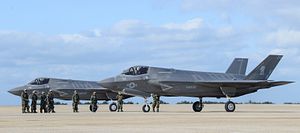Is the United States undermining the foundations of its military advantage by initiating trade wars with most of the known world?
The connections between trade and innovation are complicated, but generally speaking freer trade tends to generate more technological innovation than autarky, although much depends on the specific legal and structural conditions under which trade is conducted. During the Cold War, the United States derived immense military advantage from the global trade system that it constructed. This trade system tied the world’s most powerful economies to the United States with private and public binds, and also ensured that American producers would find consumers. While the system had drawbacks (exposure to international shocks, limitations on national economic policy) it provided a sounder basis for long-run economic growth than the autarkic policies undertaken by the Soviet Union and its Eastern European subject states.
But the global trade system was about more than economic success; it also had a military logic. On the one hand, partners with a range of social and economic connections to the United States were more likely to become politically and militarily connected to the U.S. as well, granting access to bases and similar facilities. On the other hand, the U.S. Navy largely guaranteed the security of the maritime trade lanes that allowed the global trade system to function. And the military impact even went beyond this. As Stephen Brooks has suggested, global trade in dual-use and defense technologies allowed the United States to accelerate past the Soviet Union in several critical military areas. Globalization spurred specialization and innovation, allowing the U.S. to access, integrate, and improve upon the world’s best technologies. Integration, competition, and trade between the defense industrial bases of Europe, North America, and Japan, even given the relatively autarkic nature of defense production, nevertheless resulted in a vastly more innovative system than that of the Soviet bloc.
So where does that leave us now? The United States appears to stand on the brink of another long-term competition in military technology, only this time with a far more dynamic economy. The U.S. enjoys less of an innovation advantage over China than it did over the Soviet Union, because China has not pursued the same kind of autarkic development strategy as the USSR (excepting a few important sectors). And now, instead of attempting to leverage the advantages it has established through standing at the head of the global trading order, the U.S. has decided to launch trade wars against not only China, but also several of the world’s most innovative economies.
The long range implications of these decisions remain uncertain. To be sure, the level of tariff protection that has resulted from the first months of the New Trade War Era has not yet approached that of the “embedded liberalism” period that held during the Cold War. Yet China and Europe have stepped up trade coordination, which will invariably touch upon trade in high technology goods. Under pressure from the United States, Europe has heretofore resisted the transfer of its most advanced technologies, as well as military equipment, to China; whether it continues to do so in deference to U.S. wishes is uncertain. Altogether, however, it appears that the United States may be playing a very risky hand, and may not be fully aware of the pot stakes.

































